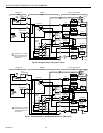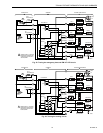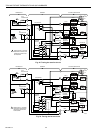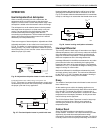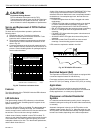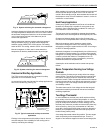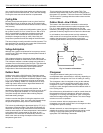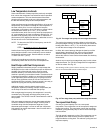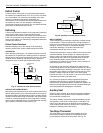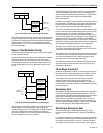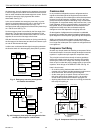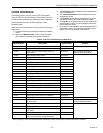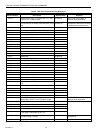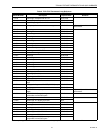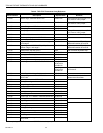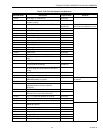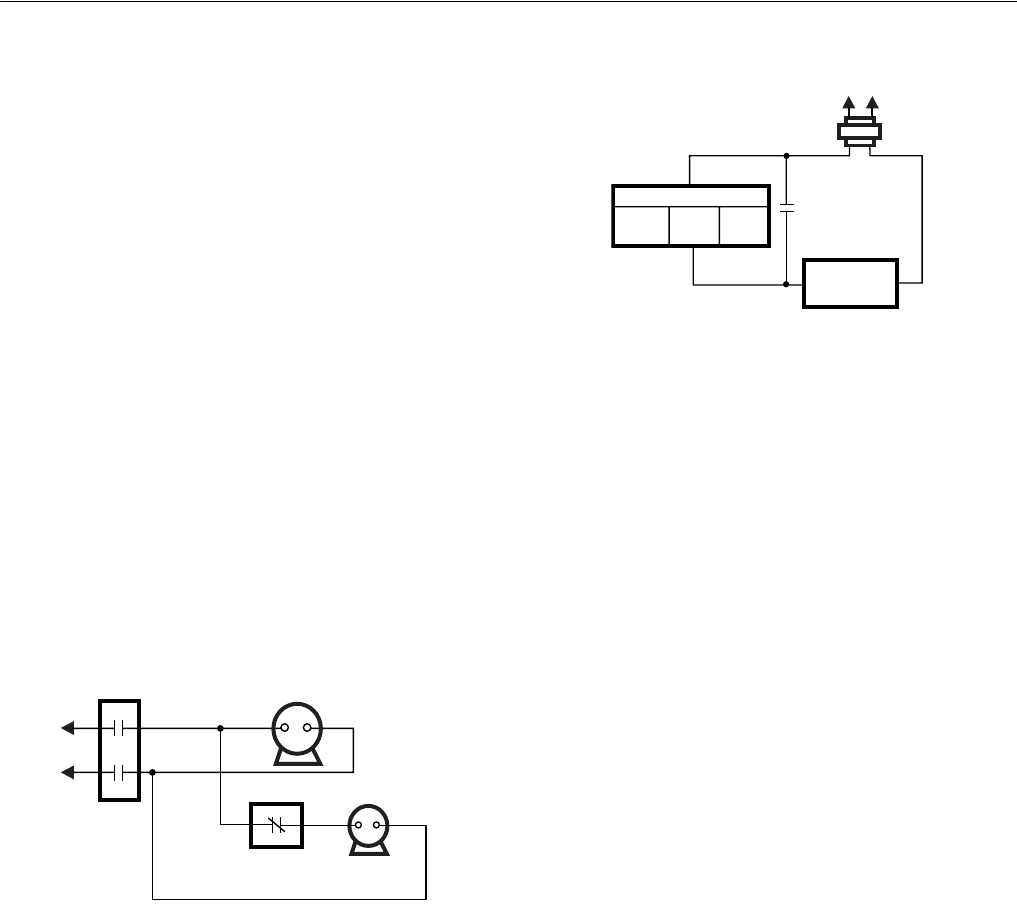
T874 MULTISTAGE THERMOSTATS AND Q674 SUBBASES
60-2485—8 26
Defrost Control
In some regions, during half or more of the heating season,
the outdoor coil operates below 32°F (0°C) Frost or ice builds
up on the outdoor coil of a heat pump similarly to the frost
buildup in a household refrigerator. Eventually, this
accumulation of ice interferes with efficient heat transfer from
the outdoor air to the coil and refrigerant. Defrosting is
occasionally required to remove this ice, and restore the heat
pump ability to absorb heat from the air.
Defrosting
A heat pump defrosts its outdoor coil by temporarily switching
to the cooling mode, which causes hot gas from the
compressor to be directed to the outdoor coil instead of to the
indoor coil so the heat pump is taking heat from the home to
warm up the outdoor coil. Defrosting is the greatest detriment
to heat pump efficiency.
Defrost Control Functions
Besides changing over to the cooling mode, defrosting
requires several more control initiated actions that follow.
OUTDOOR FAN
When defrosting has begun, it is standard practice to turn off
the outdoor fan to speed up the melting process. A separate
defrost relay is required to control that fan. See Fig. 37. Other
contacts can be needed on the defrost relay to power the
changeover valve or power part of the auxiliary heat.
Fig. 37. Outdoor fan with defrost control.
AUXILIARY HEAT DURING DEFROST
Most pump manufacturers bring on some auxiliary heat during
defrost, although this is not a universal practice. Some rely on
the second stage of the thermostat to call for auxiliary heat as
needed. Since the heat pump is operating in the cooling mode
to defrost, it is delivering cold air to the living space. Auxiliary
heat is used to offset this cooling. It requires another normally
open contact on the defrost relay. See Fig. 38.
Fig. 38. Auxiliary heat with defrost control.
WHEN TO DEFROST
Timely defrosting is an essential component of effective heat
pump operation. Failure to defrost often enough permits too
much ice to accumulate on the coil. At the very least, this hurts
efficiency; at worst, it results in compressor damage.
Insufficient defrosting is a condition the heat pump
manufacturer wants very much to avoid.
A 50 percent reduction in outdoor airflow is the maximum that
would be tolerated. So the designer of a heat pump would
select a control point that puts the system into defrost when
airflow through the outdoor coil approaches half its normal
level. Restricted airflow causes a greater load on the
compressor; the outdoor coil runs colder, suction pressure is
lower and the motor runs hotter.
At the other end of the scale, defrosting too often hurts the
overall energy efficiency of the system. Consider that in terms
of heating the building, defrosting is a big loss. Not only does
the system stop heating, but it actually moves heat out of the
building. If electric strip heat is used, it is a further waste
because its COP is 1.0 and not the 2.0 or more COP realized
if the heat is provided by the heat pump.
So, concern for equipment safety suggests fairly frequent
defrosting while economy of operation argues for fewer
defrost cycles. Since the equipment manufacturer chooses, the
balance is usually tipped in favor of more frequent defrosting to
avoid the possibility of damaging the compressor.
Auxiliary Heat
Except in warm climates, all air-to-air heat pump installations
require auxiliary heat capability. Electric resistance heaters
can provide this auxiliary heat.
The electric heaters (sometimes called strip heaters) usually
are supplied in 5 kW units or strips (about 17,000 Btu). The
indoor unit of the heat pump is designed to accommodate
various electric heat units so it can be used in variously sized
buildings in different parts of the country.
Two-Stage Thermostat
The most common heat pump control strategy is for the
thermostat first stage to switch the compressor and the
second stage to switch the auxiliary heat. See Fig. 39.
M5839
COMPRESSOR
MOTOR
CONTACTOR
CONTROLLED BY
DEFROST RELAY
OUTDOOR
FAN MOTOR
M5835
THERMOSTAT
HEAT 2
HEAT 1
DEFROST
RELAY
CONTACT
AUXILIARY
HEAT RELAY
L1
(HOT)
L2
TRANSFORMER



